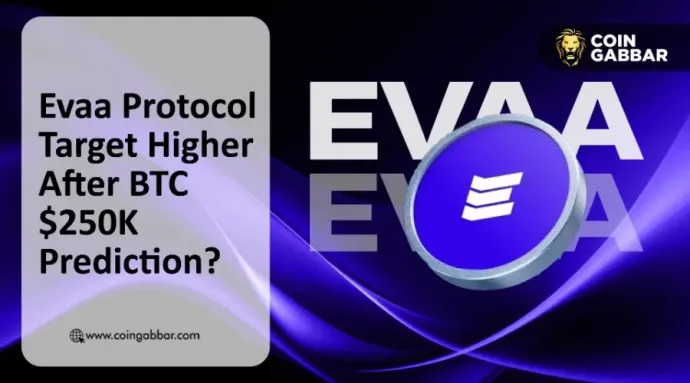Podcast Source: Anthony Pompliano
Guest: Tom Lee, Co-founder of Fundstrat, Chairman of BitMine
Broadcast Date: October 23, 2025
Compiled by: BitpushNews

Summary of Tom Lee's Key Points:
AI is not a bubble; valuations are still cheap
Nvidia's price-to-earnings ratio is lower than Walmart's, and AI investment returns have begun to show, with no signs of bubble behavior.
We are at the starting point of a super cycle
Record corporate profits, labor shortages, and productivity improvements support a long-term upward logic.
Traditional valuation models are outdated
In the current structural changes, stock price-to-earnings ratios should be much higher than historical averages.
The ultimate valuation of Bitcoin is $1.6 million - $2 million
If gold rises to $5000 per ounce, the value of the Bitcoin network will rise correspondingly.
The four-year cycle of Bitcoin is failing
This cycle may be longer and operate in new ways, requiring caution against "consensus traps."
Ethereum will become Wall Street's "sovereign reserve asset"
BitMine holds the most ETH globally, with a target price of $21,000.
Prediction markets outperform traditional economic surveys
Trueflation and PolyMarket are more accurate and transparent, while the UMich survey has become severely distorted.
A "robot tax" will be imposed in the future
Each robot action will be tracked on-chain and taxed through micropayments to compensate for the loss of the labor tax base.
The current bull market is the "most hated bull market"
Investor sentiment is extremely pessimistic, and political positions have distorted market perceptions.
Retail investors are beating Wall Street institutions
Retail investors have a longer time horizon and greater volatility tolerance, gradually gaining an edge in excess returns.
Macroeconomic drivers are weakening; fundamentals are regaining dominance
Corporate profits are exceeding expectations, and the stock market's rise is not solely driven by liquidity.
AI robots are at the core of the productivity revolution
Labor shortages are driving the adoption of embodied AI applications, akin to the wireless communication revolution of the 1990s.
U.S. inflation data is "contaminated"
The sample proportion favoring Democrats is too high, leading to a divergence between expected and actual inflation.
On-chain financial infrastructure is rapidly taking shape
Tether has become one of the most profitable financial entities globally.
The market will enter an accelerated growth phase in 2026
Loose monetary policy, manufacturing recovery, the implementation of AI technology, and multi-asset tokenization will resonate to drive the market.
The following is the main text of the interview:
Is AI a bubble?
Pompliano:
Everyone is talking about an "AI bubble." What do you think? Is it really a bubble?
Tom Lee:
If you measure "bubble" by risk-reward ratio, it's actually still too early. Take Cisco in 1998 as an example; it was one of the largest companies at the time, trading at a price-to-earnings ratio of 56, which rose to 210 within 18 months.
And what about Nvidia now? It is the most scarce company in the AI world; every leading model requires its chips, yet its price-to-earnings ratio is only 27. In comparison, Costco is at 50, and Walmart is at 34. This means Nvidia is cheaper than a membership supermarket. So we are far from a bubble.
Pompliano:
Many people are still worried that too much money is being invested in AI, and companies are burning cash too quickly. What do you think?
Tom Lee:
In fact, companies are already seeing significant returns on their AI investments. This is a combination of two uses: one is the direct benefits of replacing labor, and the other is the productivity improvements brought by superintelligence.
We should ask: how do these returns reflect in stock prices? This is difficult to quantify. So I believe the current valuations are not expensive. More importantly, AI spending is accelerating.
Look at what CEOs are saying now. They are basically all shouting, "We are in high demand." And earnings reports confirm this: corporate profits are higher, with fewer employees and improved efficiency—this means valuations are reasonable or even undervalued.
Pompliano:
In the past, we saw bubbles in areas like the internet, real estate, and biotechnology. Didn't everyone find reasons to explain the behavior at that time?
Tom Lee:
That's right, and there were indeed "bubble behaviors" back then. For example, during the biotechnology bubble, many hedge funds directly invested in university lab projects just to secure a particular molecule. That was very typical "bubble behavior."
But the current AI investments are very cautious, with no signs of reckless spending. Companies are still evaluating returns, which is quite rational. So I don't think AI is a bubble. Other areas, however, may be hiding bubbles.
Traditional valuation models are outdated; new valuation logic is forming
Pompliano:
Do you think traditional price-to-earnings valuation methods are outdated? I have always felt that today's companies need to incorporate a "currency premium" into their valuation logic.
Tom Lee:
Absolutely, valuation models are dynamic. Between 1940 and 1967, the yield on U.S. ten-year Treasury bonds rose from 2% to 6%. Logically, valuations should have fallen, but the actual price-to-earnings ratio rose from 8 to 27. Why? Because nominal earnings grew faster.
Today, the S&P's earnings are more recurring income, which naturally leads to higher valuations. Additionally, U.S. Treasuries themselves are quite expensive; a 4% yield corresponds to a 25 times valuation. So I completely agree: today's price-to-earnings ratios cannot be viewed by historical standards.
Moreover, in the past five years, we have experienced six black swan events—pandemic, supply chain collapse, inflation shock, aggressive Fed rate hikes, tariff shocks, and the U.S.-Iran nuclear facility conflict. Yet corporate profits have not only not declined but have actually grown. So I believe today's price-to-earnings ratios should be higher.
Pompliano:
In the past, people thought stock selection was most important based on fundamentals, but now it seems that a single statement from the Fed is more important than a company's earnings report. What do you think?
Tom Lee:
Yes, macro factors are indeed more influential now. But don't overlook the fundamentals; in fact, this year's earnings reports have been extremely strong. In this quarter, 85% of companies exceeded expectations, with annualized growth exceeding 15%. This is not the growth rate one would expect in a "late-stage bull market."
Many financial companies' earnings reports look like those of tech companies, but the market is still valuing them in traditional ways, which actually presents a revaluation opportunity.
"Granny Shots" ETF: A low-turnover strategy betting on the super cycle
Pompliano:
Your "Granny Shots" ETF has been very successful. Can you explain the logic behind the strategy?
Tom Lee:
We launched this fund last October, and in just 11 months, assets have surpassed $3.3 billion, making it one of the fastest funds to break $3 billion in history. This year, the return rate is 27.5%, ranking fifth among 1,330 large-cap funds.
This is a low-turnover fund, and the logic behind it is to bet on the "super cycle." We have seven major themes, such as AI, energy security, and monetary policy. We only buy stocks that meet two or more themes simultaneously.
For example, Google and Meta fit multiple themes; they are both AI stocks, appeal to millennials, and are related to monetary policy. JP Morgan is also included, as it is a "millennial bank" and is associated with a financially accommodative environment.
AI robots are coming; what should the tax system do?
Pompliano:
Recently, humanoid robots have been gaining popularity, not just for moving goods but also for hotel front desks and cleaning. What do you think about the development trend of embodied AI?
Tom Lee:
This aligns perfectly with our "global labor replacement" super theme. The world is facing a shortage of quality labor, and AI and robots are filling that gap.
Historically, it was similar when wireless communication was just starting: various companies raised funds, conducted experiments, and there was intense speculation, ultimately leading to a winnowing process. The robotics industry will also go through capital waste, but ultimately, it will leave behind players that change the world.
Pompliano:
You mentioned that the government may impose taxes on robots in the future. How would that work?
Tom Lee:
I believe there will be a "robot tax," and it will be a micropayment mechanism. In other words, for each work action completed, such as moving a box, a tax of 0.001 cents will be levied.
This actually has precedents; currently, a significant portion of the U.S.'s $28 trillion fiscal revenue comes from wage income taxes. If robots replace human labor, that tax base must be compensated through robot activities.
Moreover, through blockchain technology, we can accurately track machine activities and complete tax collection using a cryptocurrency payment system, such as Tether, which supports high-precision small transactions (more granular than the dollar).
Economic data is no longer trustworthy—Michigan survey data is "contaminated"
Pompliano:
You mentioned that the University of Michigan consumer survey data (UMich) is no longer trustworthy. Is that true?
Tom Lee:
Yes. UMich has long been one of the most valued surveys by economists, covering inflation expectations, consumer confidence, and more. But recently, we found that its data structure has significant issues.
For example, the current one-year inflation expectation is 4.3%, the same as the peak inflation in 2022, but the actual CPI is mild. We looked at the data details: Democratic respondents said 5.1%, while Republicans said 1%. Additionally, 4% of Democratic respondents believe inflation will reach 30% next year.
Why is there such a large discrepancy? Because the sample has become unbalanced: 18 months ago, only 49% of the survey sample were Democrats, but that has now risen to 65%. This has rendered the entire survey unrepresentative.
Pompliano:
Will this distorted data affect market and policy judgments?
Tom Lee:
It indeed has an impact. Many quantitative systems and the Fed reference this type of data. If the data itself is "contaminated," the systems will draw incorrect conclusions, and policies may also deviate as a result.
Moreover, UMich used to conduct phone surveys, but now it has switched to fully online email surveys, which may have shifted the sample source.
Prediction markets are the future
Pompliano:
So you think we need alternatives, such as prediction markets on blockchain?
Tom Lee:
I completely agree! PolyMarket is an excellent example. It extracts real expectations through "market betting," outperforming traditional surveys.
Similarly, Trueflation does not ask, "What do you think inflation is?" but directly captures real-time price data, such as rental prices on e-commerce sites, supermarket prices, etc., which is accurate, transparent, timely, and even updated daily, making it more reliable than CPI.
Pompliano:
You mentioned that in the future, stocks will also be broken down into "factors" for predictive trading. How should that be understood?
Tom Lee:
This is the power of "Tokenization." For example, Tesla can be broken down into several factors: sales in China, the number of Model X orders, and the EPS forecast for 2026. Each factor can set up a prediction market on-chain. This split prediction is more transparent than traditional stocks and allows investors to bet specifically on the data they care about.
Pompliano:
You've observed that projects in the crypto world that successfully "break out" often outperform traditional alternatives. What are some typical examples?
Tom Lee:
Here are a few typical examples:
Tether: With 150 employees, it achieved $20B in profits, generating profits per capita far exceeding JPMorgan. In terms of profitability, Tether is one of the top ten banks globally.
Trueflation: Provides daily on-chain inflation data that is more real and transparent than the official CPI.
PolyMarket: Accurately predicted all results in 50 states for the 2024 election, outperforming all mainstream models.
This indicates one thing: on-chain transparent systems can defeat traditional black-box models.
BitMine Ethereum Strategy: Holding the most ETH globally, targeting a price of $21,000
Pompliano:
BitMine is a new project you are leading, aiming to hold 5% of Ethereum. How is the progress so far?
Tom Lee:
We currently hold 3.23 million ETH, approximately 2.7% of the total supply, making us the entity with the most ETH held by a single institution globally, surpassing the Ethereum Foundation.
The core strategy of BitMine is to use Ethereum as a sovereign reserve asset, engaging in native staking, with expected returns of about 3%. Based on market capitalization, this could generate $500 million in pre-tax profits annually, placing us among the top 800 profitable companies in the U.S. stock market.
Pompliano:
Why are you so confident in Ethereum? Isn't Bitcoin the digital gold?
Tom Lee:
I personally believe in Bitcoin and consider it digital gold, an excellent "store of value." However, Wall Street will not choose the Bitcoin blockchain to build a financial system because it does not support smart contracts.
Building tokenized dollars, stocks, and payment systems all require a smart contract platform. Currently, over 70% of tokenized projects choose to operate on Ethereum, which has a 100% uptime record and a mature ecosystem.
If in the future, 20 large investment banks treat ETH as a financial reserve asset—ETH's price will skyrocket.
We expect ETH to return to the BTC ratio of 2021, corresponding to a target price of $21,000/ETH.
Is the rise in gold a positive for Bitcoin?
Pompliano:
Gold has recently surged. Do you think this is a negative for Bitcoin? Or a positive?
Tom Lee:
This is a significant positive.
The network value of gold has risen significantly. If gold eventually stabilizes at $5000 per ounce, the total market value will be immense.
If Bitcoin can match gold's network value, then its fair value will be between $1.6M and $2M per coin. Therefore, the higher gold rises, the higher Bitcoin's future ultimate value will be.
Pompliano:
How long do you think it will take to achieve this valuation?
Tom Lee:
I believe it is possible to reach within five years. Bitcoin's price movements are often "pulled up" by gold rather than restricted by it. Gold establishes the "anchor for monetary value," and Bitcoin will rise alongside this anchor.
Does the four-year cycle of Bitcoin still exist?
Pompliano:
Many in the crypto circle believe in the "four-year cycle." What do you think?
Tom Lee:
The vast majority believe Bitcoin will peak early next year—because this aligns with the historical halving rhythm. But personally, I think:
When most people believe something, it is likely that it will not happen.
So either Bitcoin has already peaked early, or we are in a new phase of a longer cycle.
Pompliano:
Do you think there will still be a drop of over 50% in the future?
Tom Lee:
Of course. Even in the U.S. stock market, there have been multiple 25% corrections in recent years. The crypto market is more volatile, and a 40-50% drop is still possible, even if it is in an upward trend.
Pompliano:
Do you think Bitcoin has a chance to surpass gold this year and hit $200,000 by the end of the year?
Tom Lee:
It is entirely possible.
Don't forget, Bitcoin's best trading days in history are concentrated within just ten trading days each year, usually in the fourth quarter.
This fourth quarter has many catalysts:
- The Fed shifting to easing
- The risk of a U.S. government shutdown easing
- Stabilization of U.S.-China tensions
- Seasonal strength in the stock market (rising stocks driving Bitcoin up)
So there is a very high chance of a significant Bitcoin surge in the fourth quarter.
Are retail investors really beating Wall Street? Why are they performing better?
Pompliano:
Many retail investors are currently outperforming institutional fund managers. What do you think?
Tom Lee:
I have two hypotheses:
Institutions are "mutually consuming alpha": each institution uses the same data and algorithms, leading to similar conclusions, resulting in "everyone becoming average."
Retail investors are more like "permanent capital," thinking long-term: institutions mostly trade on a six-week time scale, while retail investors often think in terms of 5-10 years. They are less concerned about short-term fluctuations and can more easily ride out cycles to reap significant returns.
Additionally, crypto traders are generally more adaptable to volatility than stock market investors, and they are even better at playing market sentiment.
Pompliano:
They have experienced two 80% crashes and don't care about a 20% correction in the stock market.
Tom Lee:
I completely agree. I have interacted with some top crypto traders, and they are very precise in the stock market as well, because they have developed strong emotional control and a sense of rhythm.
Why is this the "most hated bull market"? The reason is actually political?
Pompliano:
You referred to this market rally as the "most unpopular stock market rise." Why?
Tom Lee:
Data shows that investor sentiment is extremely pessimistic. For example, the AAII net bullish indicator averaged -11.7 for the year, a sentiment level that historically only appeared in the bear market years of 1990, 2008, and 2022.
But now the S&P has risen 15%. How can this be a bear market?—So this is the "most hated bull market."
Why? Because of political division:
- 57% of professional investors are Democrats
- 66% of hedge funds lean Democratic
- 69% of venture funds support Democrats
They do not agree with Trump's policies, even if those policies have led to market gains, and they are unwilling to accept it. Therefore, they have been "shorting sentiment."
Pompliano:
This indeed makes me realize that market research is also polluted by political views.
Tom Lee:
Not just people; even algorithmic systems are polluted. Because algorithms read public comments and opinion articles, and these texts have been packaged by political stances.
Pompliano:
What do you think about the Opendoor incident? Retail investors united to push for the CEO's resignation and even brought in the former CEO of Shopify.
Tom Lee:
I haven't studied this company in depth, but I support such actions. If it can promote company reform through legal and rational means and benefit more retail investors, it is a healthy signal for the capital market.
Social media provides amplifiers for trusted individuals, and distributed influence is challenging the monopoly of traditional institutions.
Outlook for 2026
Pompliano:
Finally, let's talk about 2026. What do you think about the medium to long-term market trends?
Tom Lee:
We are still in a potential period.
From a fundamental perspective, there are several positive factors for 2026:
- Easing monetary policy: This will help lower mortgage rates and release demand in the housing market.
- ISM manufacturing index rebounding from the bottom: It has been below 50 for 32 consecutive months, the longest period of stagnation in history. Once it rebounds, manufacturing confidence will improve significantly.
- AI and robotics technology implementation: This will lead to productivity improvements and drive corporate profits.
- Stablecoins and on-chain assets will fully explode: This will push the financial system into the on-chain era.
However, it is important to note that if the S&P closes above 8000 points at the end of 2025, there may be a 30% correction in 2026, as the pace of the rise may have been overdrawn.
免责声明:本文章仅代表作者个人观点,不代表本平台的立场和观点。本文章仅供信息分享,不构成对任何人的任何投资建议。用户与作者之间的任何争议,与本平台无关。如网页中刊载的文章或图片涉及侵权,请提供相关的权利证明和身份证明发送邮件到support@aicoin.com,本平台相关工作人员将会进行核查。




